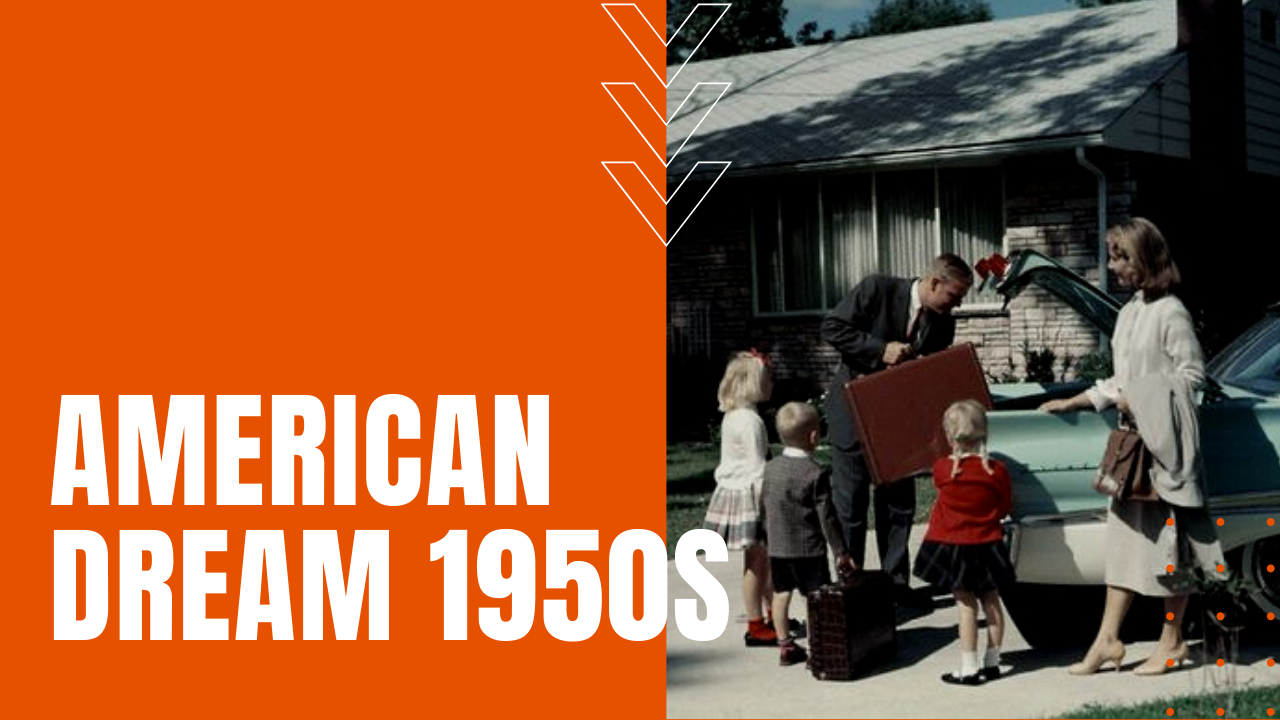The American Dream of the 1950s

After the hardscrabble days of the Great Depression, America’s all-in, can-do commitment to winning the war against tyranny, brought about a time of booming prosperity, prompting former British Prime Minister Winston Churchill to proclaim that “America at this moment, stands at the summit of the world.”
The American Baby Boom
Soldiers who had survived World War Two returned home weary of adventure, with a unified desire to settle down into family life with their sweethearts, igniting a Baby Boom in the 1950s that recorded roughly four million births each and every year. The post-war economy boomed as well, kicking off a golden age of American Capitalism that saw the doubling of America’s gross national product from 1946 to 1960, flooding a burgeoning middle-class with consumer goods and revolutionary home appliances like never before.
Fueled by low-cost mortgages backed by the G.I. Bill, young couples flocked to new tract suburbs built by developers such as William Levitt, collectively earning the nicknames “Fertility Valley” and the “Rabbit Hutch” in light of the ongoing Baby Boom.
Domestic and International Tensions
The decade also witnessed a steady rise in Cold War tensions, as Americans fretted over the perceived spread of communism by one-time war ally the Soviet Union, leading to the rise of McCarthyism and the “Red Scare” of the 1950s, which prompted Congress to hold 84 hearings on “un-American activities” from 1945 to 1952.
No one was immune from congressional scrutiny, including federal workers, university professors, Hollywood and the military, in the end failing to uncover much treasonous activity, yet causing tens of thousands of Americans to lose their jobs, families and friends.
Civil rights also came into focus, when the Supreme Court’s 1954 Brown v. Board of Education declared that separate educational facilities for Blacks and whites was “inherently unequal,” leading 100 Southern congressmen to sign the “Southern Manifesto” two years later, affirming their staunch defense of Jim Crow laws and racial segregation in the South.
In December of 1955, Rosa Parks refused to surrender her seat on a city bus for a white person, igniting a 13-month boycott by Montgomery Alabama Blacks after Parks was arrested for her show of nonviolent resistance.
1950s Music and Television
The decade also saw the birth of Rock N Roll, as a new sound swept the nation by music icons such as Elvis Presley, Sam Cooke, Buddy Holly, Chuck Berry and Fats Domino. Young people danced to The Platters and The Drifters, while musicians like Jerry Lee Lewis pioneered the rockabilly sound. Known as “The Day The Music Died,” on February 3rd, 1959, a nation mourned the tragic loss of Buddy Holly, Ritchie Valens and J.P. Richardson—taken in their prime by a plane crash over Clear Lake Iowa.
Television and Hollywood movies also shared the limelight, witnessing the Golden Age of Television as more and more American could afford such technological luxuries, along with enough leisure time and money to escape into the world of Hollywood movies.
Shows like The Honeymooners, I Love Lucy and Leave It To Beaver kept families glued to their TV sets, while movie icons such as John Wayne, Elizabeth Taylor, Dean Martin and Marilyn Monroe swooned the hearts of American moviegoers, making the 1950s a vital catalyst for the Sixties and beyond.
